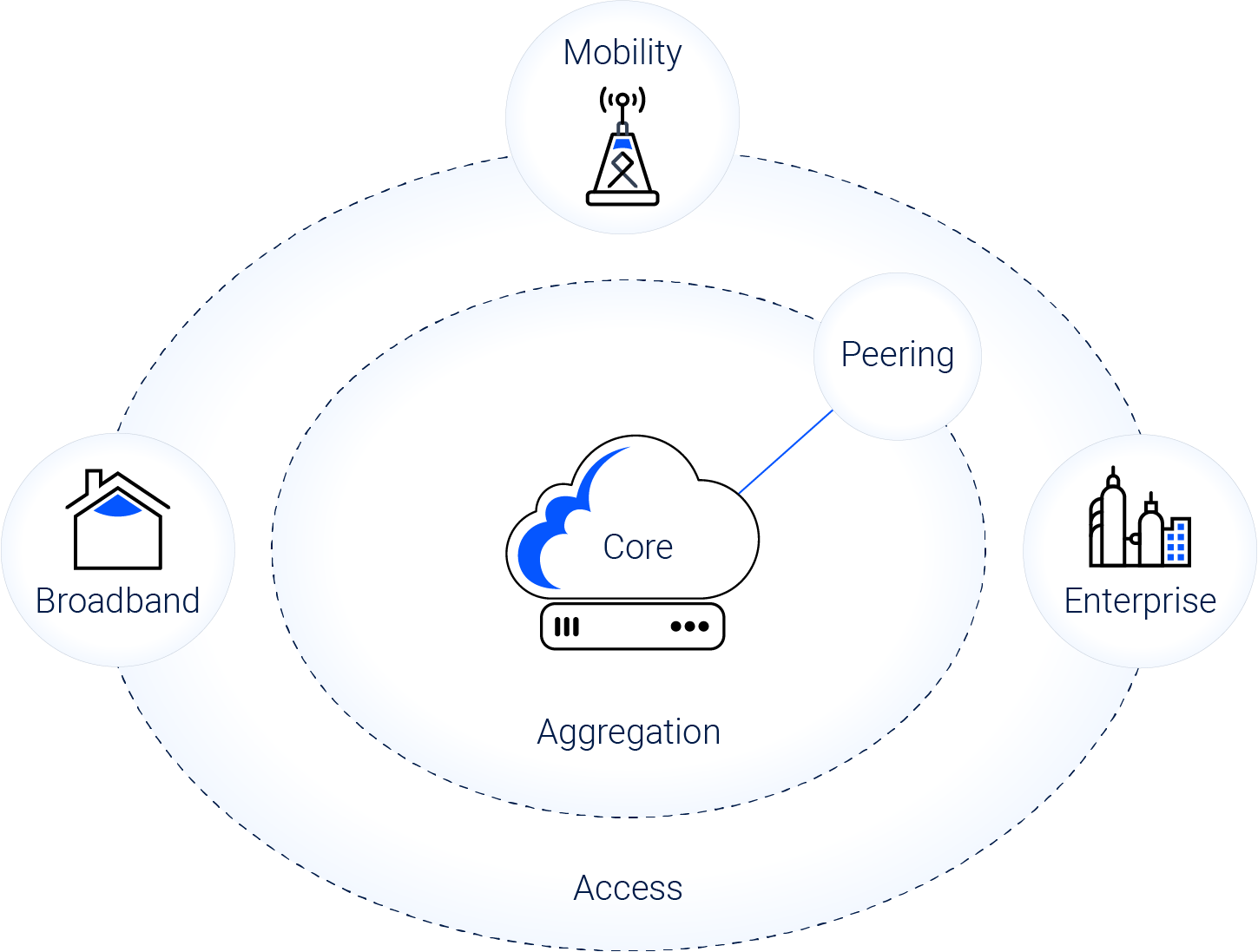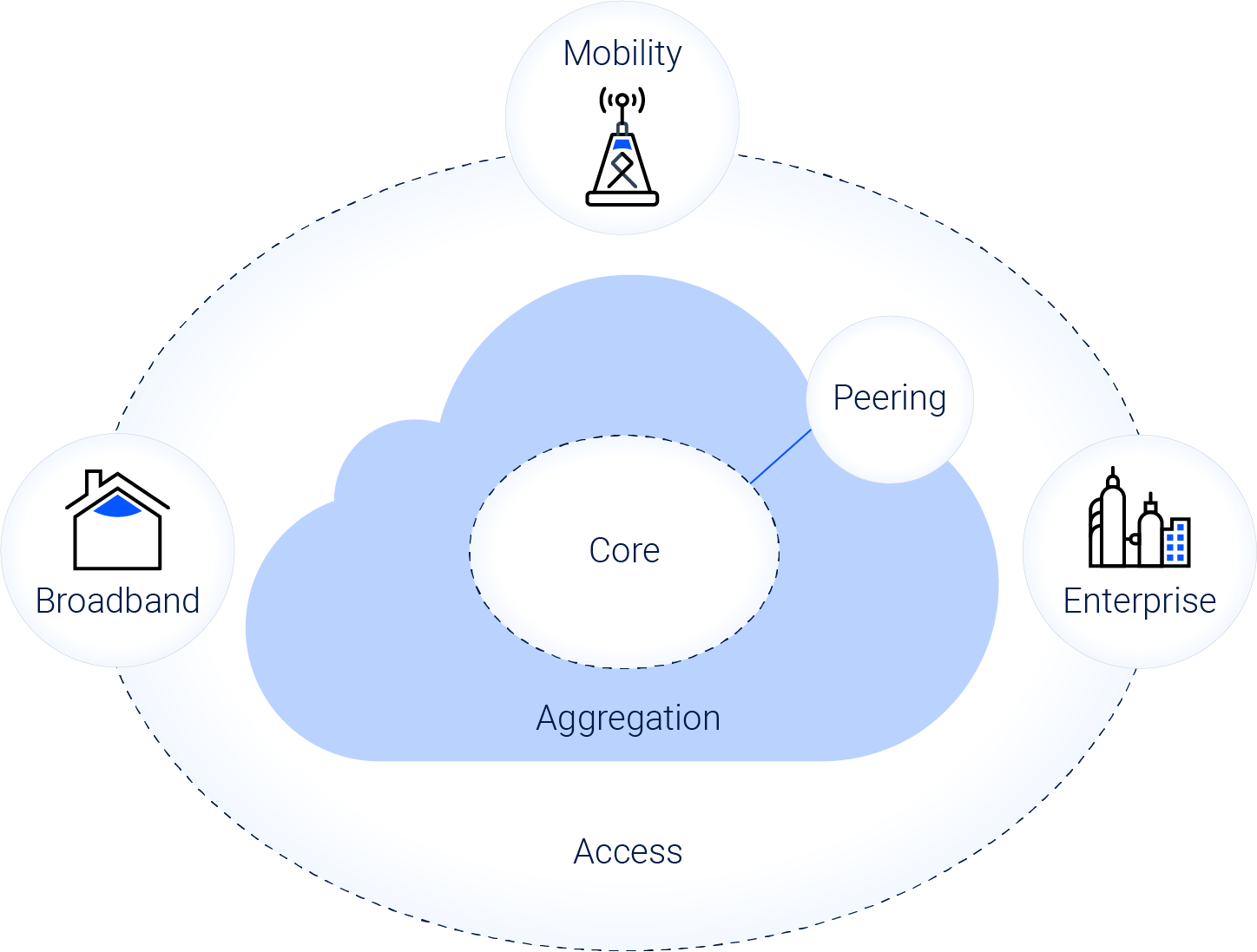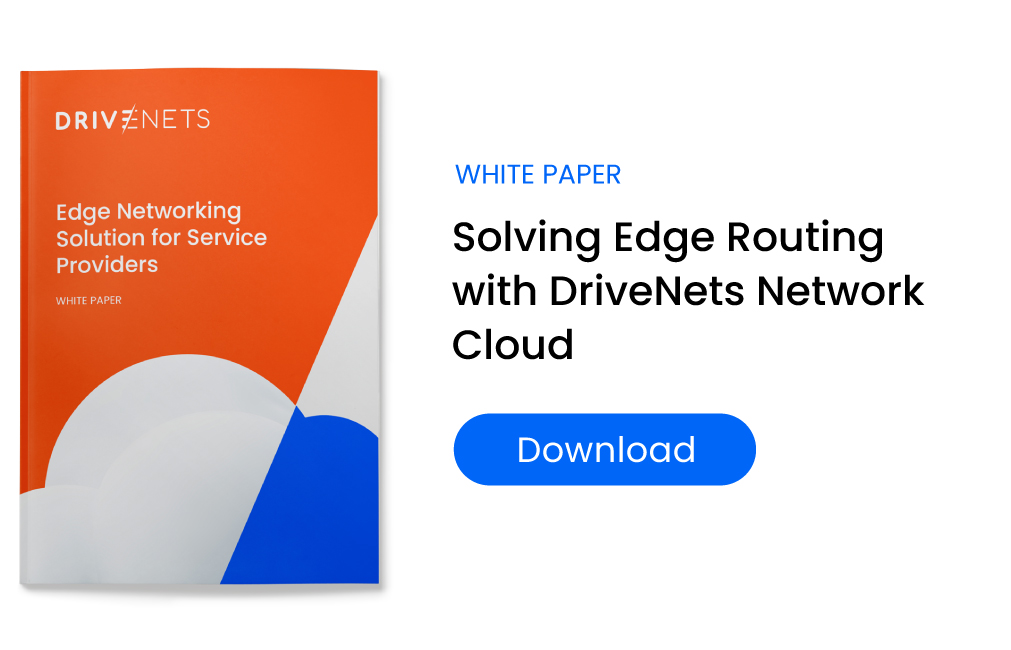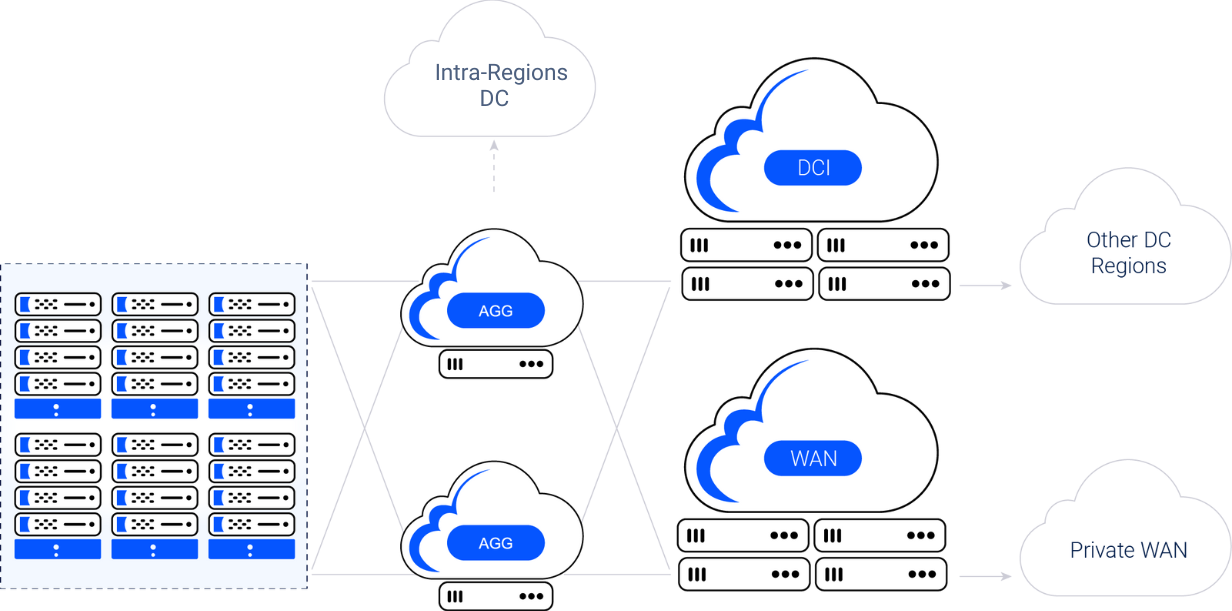Industry Events
At OFC 2024, DriveNets' Calin Miculescu P.Eng demonstrates the future of networking,...
Read moreCore networks are where scaling and efficiency matter the most. The ever-increasing traffic flow through the core network, driven by the surge in personalized content and the increased performance of access networks, pose a challenge to modern core networks.
DriveNets Network Cloud addresses these challenges by changing the network paradigm – building networks like cloud – scalable, elastic, cost-efficient and simple to manage.
Based on a distributed disaggregated chassis architecture, the Network Cloud solutions allows cloud and network operators evolve their core network without the limitations and constraints of past, monolithic architectures.


The new network edge requires tight integration of edge computing and edge networking. As more and more latency-sensitive applications emerge – networking and compute functions need to move towards the network edge – closer to the end user.
This trend also optimizes traffic distribution across the network as content-delivery networks become more distributed and content instances also reside at the network edge.
This means that the network edge should efficiently handle applications, requiring computing resources, as well as a growing volume of traffic.
DriveNets Network Cloud for edge cloud architecture addresses these challenges by combining networking and compute resources over a shared, cloud-like infrastructure. It allows operators to put greater functionality at the network edge, even in site with space and power limitations. This allows network and cloud operators to improve their service quality, enable new, latency-sensitive services and optimize the traffic distribution across their network.

The network peering function is a critical part of the networking infrastructure. It requires scaling in terms routing table exchange and network architecture evolution, which calls for additional peering points in different locations of the network.
DriveNets Network Cloud addresses these challenges by changing the network paradigm – building networks like cloud – scalable, elastic, cost-efficient and simple to manage.
Based on a distributed disaggregated chassis architecture, the Network Cloud solutions allows cloud and network operators to implement a feature rich peering network function over a standalone box or as a part of a cluster which also implements core, aggregation or edge functionality.

The network peering function is a critical part of the networking infrastructure. It requires scaling in terms routing table exchange and network architecture evolution, which calls for additional peering points in different locations of the network.
DriveNets Network Cloud addresses these challenges by changing the network paradigm – building networks like cloud – scalable, elastic, cost-efficient and simple to manage.
Based on a distributed disaggregated chassis architecture, the Network Cloud solutions allows cloud and network operators to implement a feature rich peering network function over a standalone box or as a part of a cluster which also implements core, aggregation or edge functionality.
With data center spread expanding in both quantity, size and density, the connectivity between data centers becomes a versatile challenge. Traffic patterns are continuously shifting thus intensifying the load on the DCI network.
DriveNets Network Cloud addresses these challenges by building networks as an internal part of the cloud and turning the DCI into an integral part of the data center, making the connectivity to and from the datacenter – seamless.
Based on a distributed disaggregated chassis architecture, the Network Cloud solutions allows cloud providers to manage all layers of DCI using the same methodology and leverage a hyper-scalable infrastructure, reducing the burden of never-ending planning and extending their infrastructure.

Industry Events
At OFC 2024, DriveNets' Calin Miculescu P.Eng demonstrates the future of networking,...
Read moreBlog
Evolution is inevitable in any market, as the competitive environment and changes in market demands accelerate evolution. Some players, such...
Read moreWhite Papers
This white paper examines how service providers should evaluate next-generation architecture for multi-service routing applications. There is a tendency to...
Read more